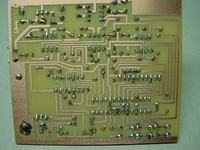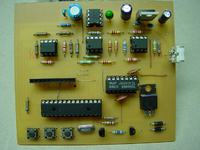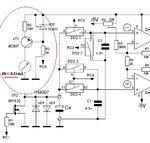bkelciov
Member level 1

We can't pinpoint the problem. You have to do that. We only can guide you.
Check the circuit board and the components. Look for shortcuts or discontinued trails, check for +5V and -5V ( in fact is only -4.2V ). Change LM393 and CD4066, swich DA1 with DA2. Make sure to write correct hex for your PIC. Some people use the same hex for PIC876A and PIC873A but others said that the hex is different.
If all is ok than you have to try with other PIC.
Check the circuit board and the components. Look for shortcuts or discontinued trails, check for +5V and -5V ( in fact is only -4.2V ). Change LM393 and CD4066, swich DA1 with DA2. Make sure to write correct hex for your PIC. Some people use the same hex for PIC876A and PIC873A but others said that the hex is different.
If all is ok than you have to try with other PIC.






